Summary: avoid back games involving the ace point. Seek back games with two consecutive points (eg 34) – better if they are in the middle of your opponent’s home board, maybe also with a single point owned by your opponent in-between.
“Which Backgame is how good?” – That’s a question I was asking me for a long while. I know, some back games are actually fairly good for the defender. Some are not. But I didn’t find good info on the internet.
So I’m trying them all out and log my results here.
I’m using three variations of the same position: one with maximum timing, one with minimum timing, one with a bit more than minimum. It’s always white to move, with a roll that doesn’t give blue an immediate hit.
There’s probably also an “optimal timing” which would be interesting, but which is too much to find out with my limited skills.
So here’s the three positions, for an 21 backgame:
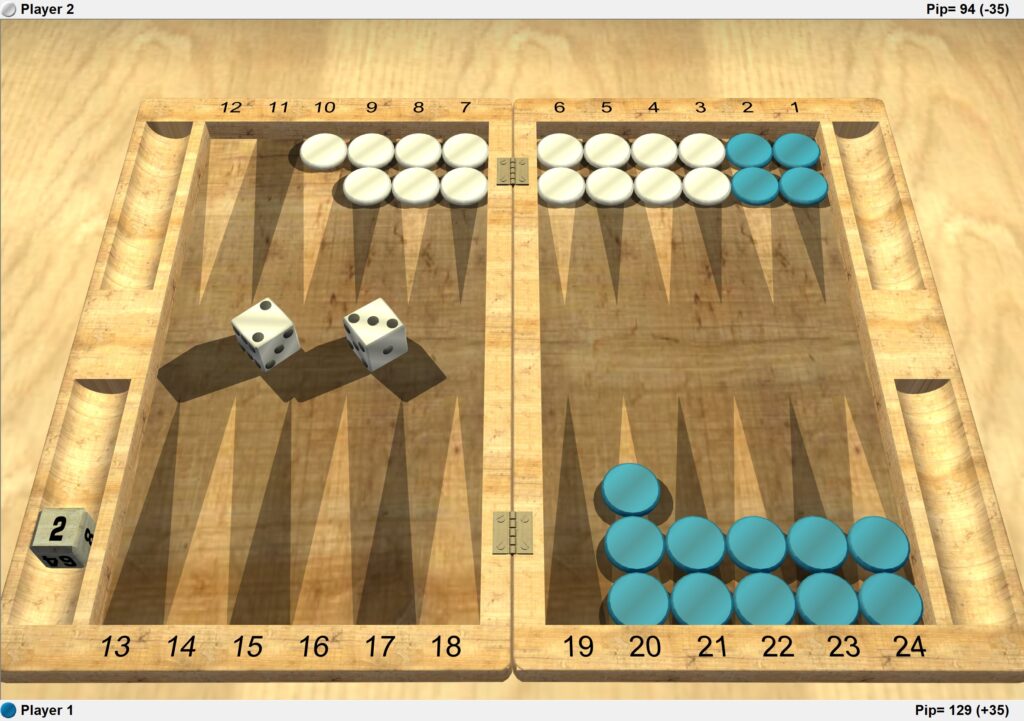
In my “A” positions, blue has poor timing; his board will crumble in the next move.

In my “B” positions, blue has a lot of checkers to move before the board starts to crumble. Note that for some back games this is probably too much timing.
And finally, for the “C” position I moved the third checker on 20 in the “A” position to the 11 point for another 9 pips more timing.
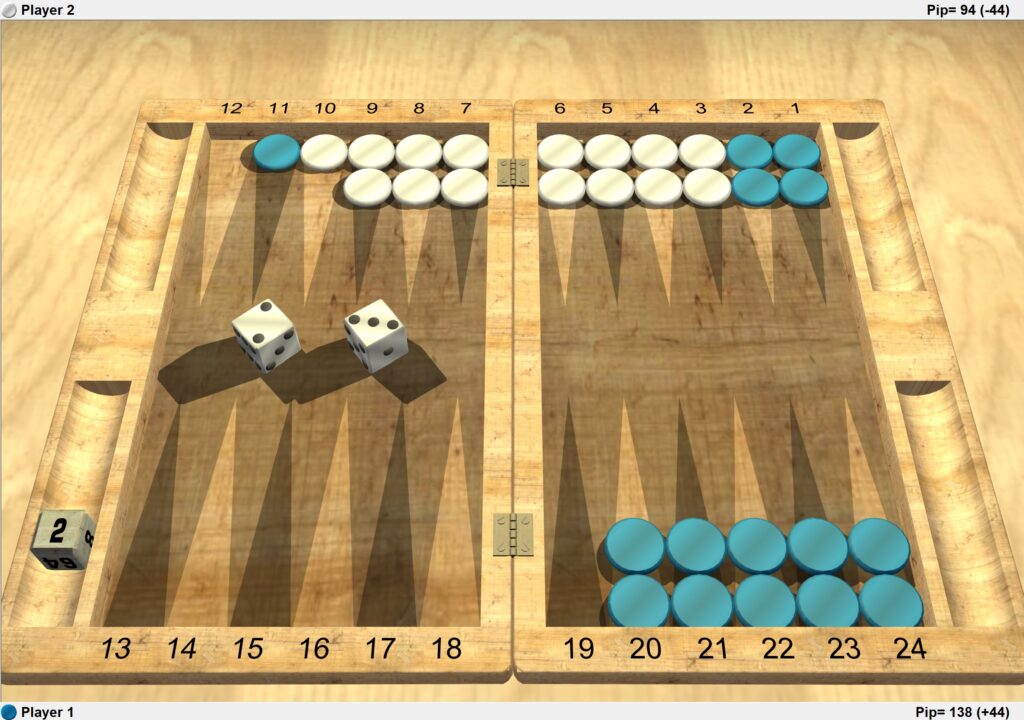
What I did then was feed the A and B and C positions for every single backgame of two points into XG2, analyze the move that it found best, initially, at Roller++, and looked at equity, winning chance for white, Gammon/Backgammon chance for white.
If I was analyzing a back game where the blot on 10 couldn’t easily move to safety with the 32 roll (e.g. a 54 back game), I changed the roll to 31, and in the special case of a 65 backgame, to 42, so that white always has a roll that doesn’t give blue a shot.
For clarity here’s position “B” – much timing for a 43 back game.
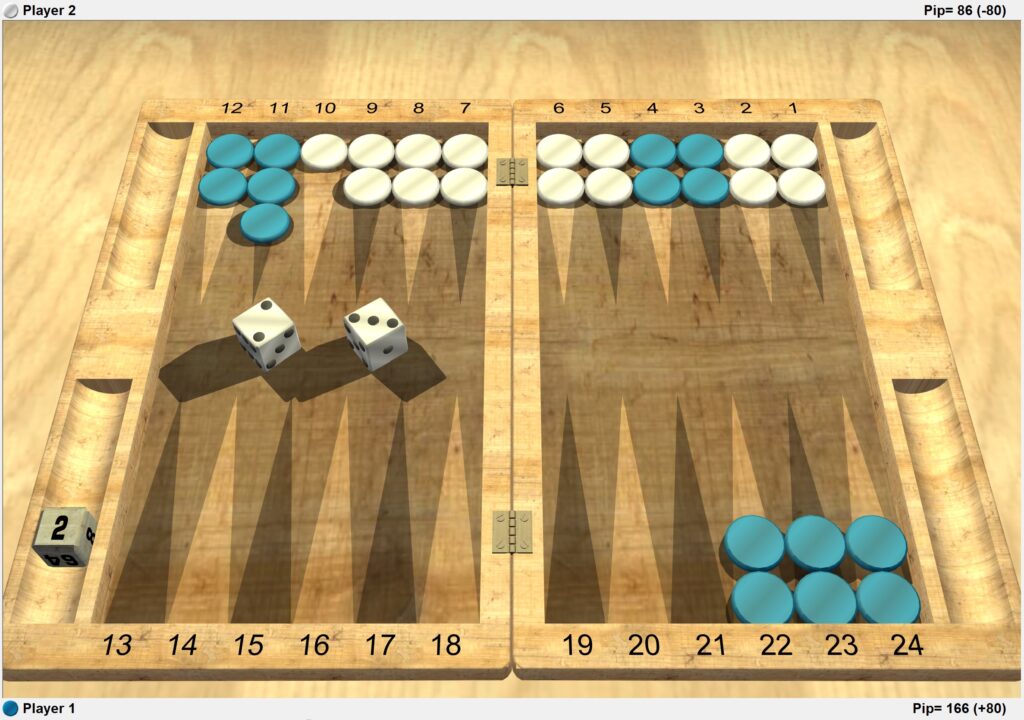
Findings
Findings
More timing, more gammon losses
Totally trivial finding: much timing will lead to more gammon and backgammon losses. Only for an 12 back game this doesn’t make a difference. A well timed 13 backgame already gives you 5% more gammons, and this percentage increases continuously until for a 65 backgamme the additional 5 checkers cause a 35% difference of gammon wins for white.
The reason is of course that 5 checkers on 12 and 11 need to be brought home, which adds a lot of gammons. In a 21 back game this is not critical, but e.g. in a 43 back game it is.
You don’t want a back game with your ace point
The questions that made me embark on this mighty analysis mission were:
1. “if I can choose, which back game should I go for?”
2. “is this a backgame worth playing (or e.g. dropping)?”
To answer this question, let’s have a look at the equities in our test positions. In normal games you only have limited control over how your timing evolves (and then you get that 66 when you really don’t want it). Therefore I’ve simply taken the average of the equities of the three positions A, B, C. Here they are.

“What is this supposed to mean?” you ask?
It’s simple. To find out what average equity you get for a 42 back game, look at the row labeled “2” and the column labeled “4” and you’ll see the value 0.71 (it’s German excel so you see a comma instead of a dot).
This means that if you take the equity for position “A” (low timing), and the equity for position “B” (much timing), and the equity for position “C” (in between), then their average is 0.71. A 42 back game is not the worst you can have. You might even take a cube.
Result:
- The worst five back games here are the 61, 51, 41, 31, 21 backgames.
Probably you don’t want to play a backgame involving your ace point. - Your best chances with a back game are the 43, 54, 53 back games.
Good back games: two consecutive points in the middle of your home board.
If you’re at the end of a match and gammons don’t count, then not this equity but the pure winning chances for white (and blue) are most interesting:
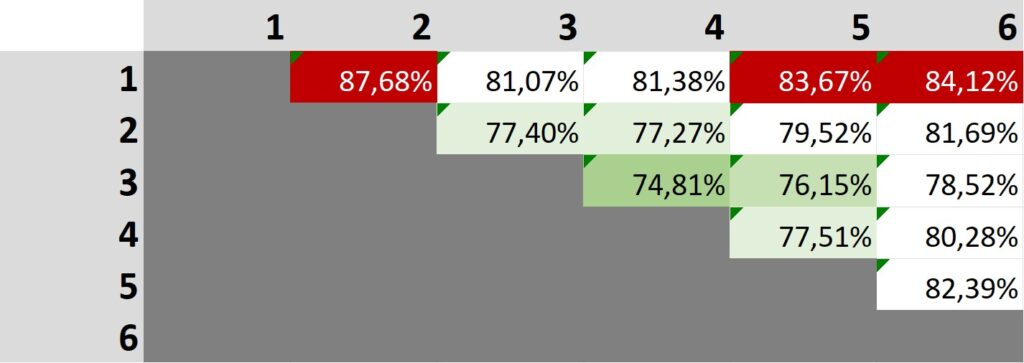
The situation is similar, but not entirely the same.
Again: don’t play a back game with your ace point.
Best: go for the 3 point if you can. 32, 34, 35 are all good.
If you have A LOT of timing, go for at most 1 point between your points
Let’s have a look at the equity for only the “B” position in which you have 5 checkers to move home, plenty of timing.
Please note: timing is relative – the pip difference that is great timing in one position might be too little or too much in another position, so please take this with a grain of salt.
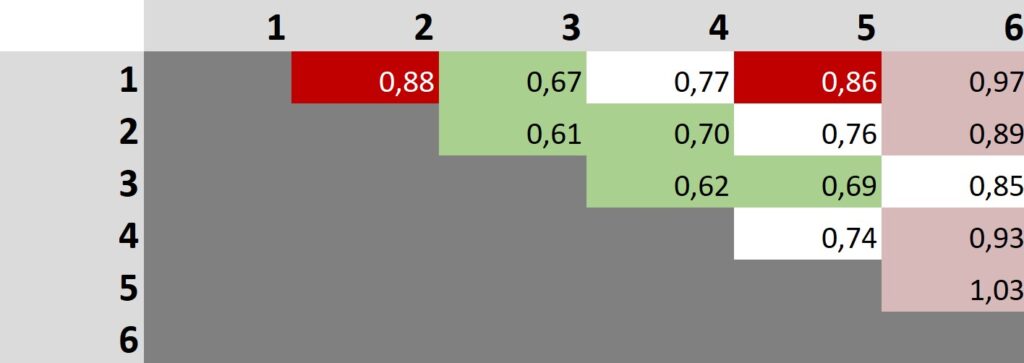
First you notice that all 65..61 back games are poor here. But as the 6 point is and stays in white’s hand in pretty much every game, let’s mark them in a greyish pink and ignore them.
Results:
- The best back games are 31, 32, 42, 43, 53 – go for adjacent points or for points with only one point in-between.
- The worst back games are, again, involving the ace point – 21 and 51 (and 61 which we ignore)